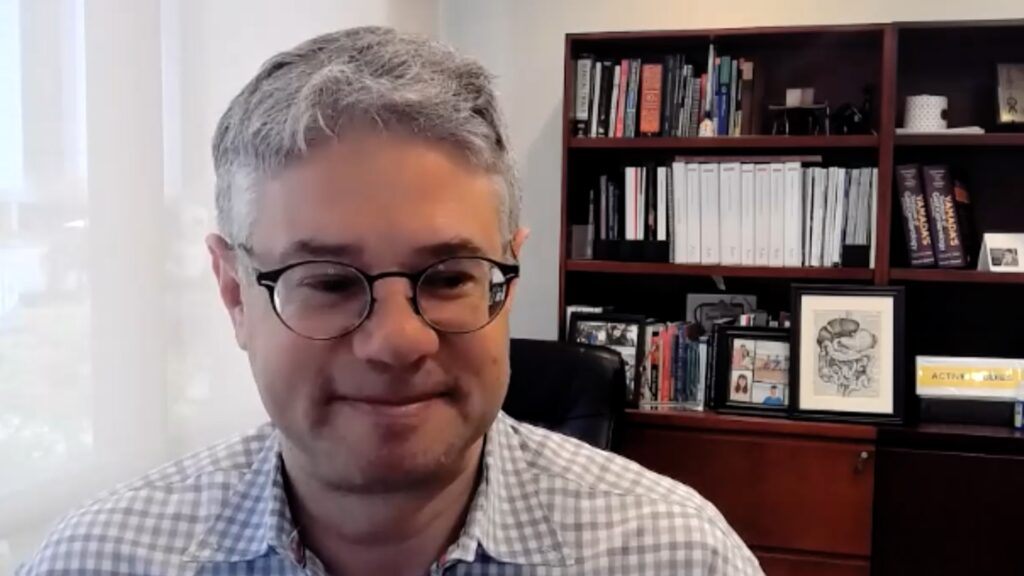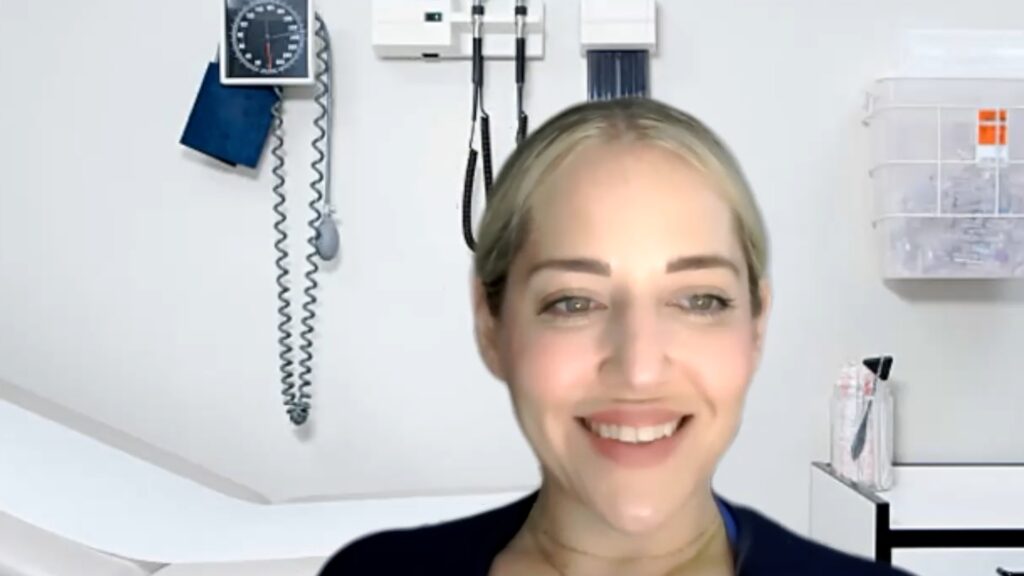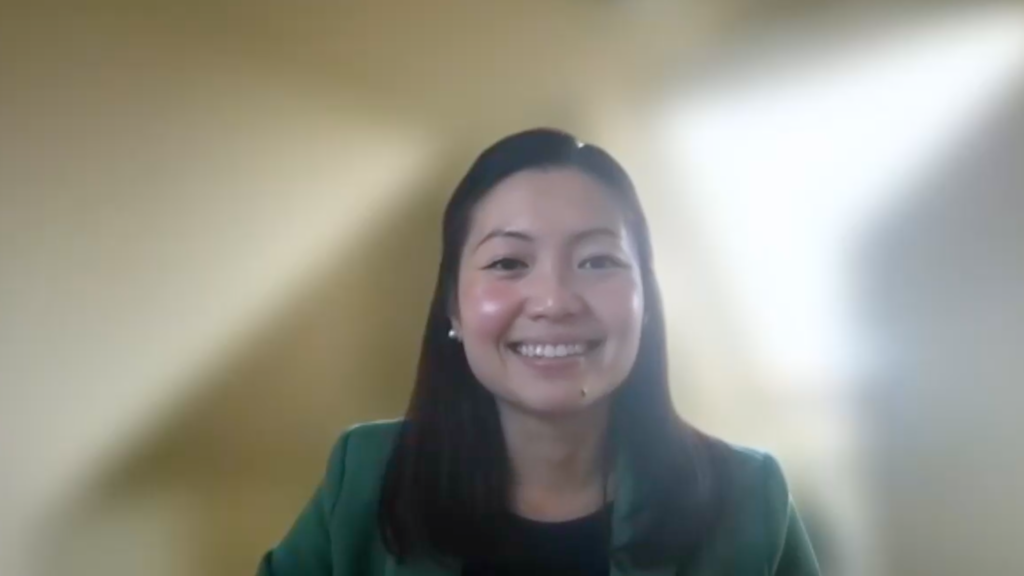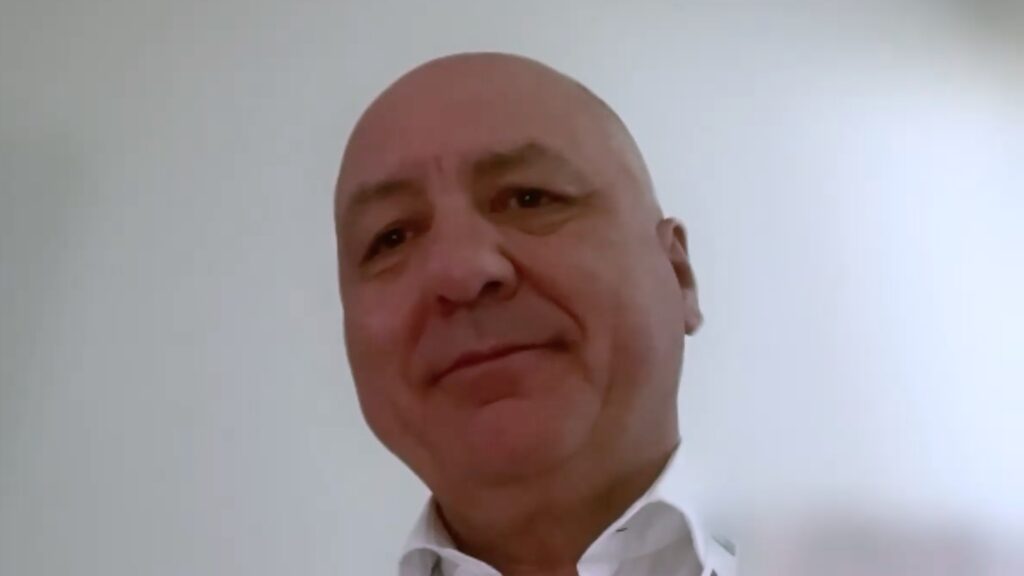The current treatment paradigm for ulcerative colitis (UC) includes amino salicylic acid as a first line treatment followed by corticosteroids, targeted treatment and rectal topical therapy; however, with corticosteroids (CS) impacting long-term health, CS-free remission has become a long-term goal in treatment. Etrasimod is an S1P receptor modulator, recently investigated for the treatment of UC where CS-free remission was a clinical endpoint. In this touchIMMUNOLOGY interview, we spoke with Dr. Stefan Schreiber (University Hospital Schleswig-Holstein, Kiel, Schleswig-Holstein, Germany) around the current treatment paradigm for ulcerative colitis, the importance of corticosteroid-free remission as a long-term outcome in treatment and the mechanism of action of etrasimod.
The abstract ‘Achievement of corticosteroid-free clinical endpoints in subjects with ulcerative colitis: an analysis of the phase 3 ELEVATE UC 52 trial.‘ (Abstract number: DOP41) was presented at ECCO 2023, March 1-4, 2023.
Questions
- How important is corticosteroid (CS)-free remission as a long-term outcome in ulcerative colitis (UC) treatment? (0:11)
- Please could you describe the current treatment paradigm for UC? (1:01)
- What is the mechanism of action of etrasimod? (2:50)
Disclosures: Stefan Schreiber discloses consulting for AbbVie, Amgen, Arena, BMS, Biogen, Celgene, Celltrion, Fresenius, Galapagos, Gilead, Janssen, Lilly, MSD, Pfizer, Provention Bio, Protagonist, Sandoz, Takeda, and Theravance; serving on advisory boards for AbbVie, Amgen, Arena, BMS, Biogen, Celgene, Celltrion, Fresenius, Galapagos, Gilead, Janssen, Lilly, MSD, Pfizer, Provention Bio, Protagonist, Sandoz, Takeda, and Theravance; and receiving honorarium from AbbVie, Amgen, Arena, BMS, Biogen, Celgene, Celltrion, Ferring, Fresenius, Galapagos, Gilead, Janssen, Lilly, MSD, Pfizer, Provention Bio, Protagonist, Sandoz, Takeda, and Theravance.
Support: Interview and filming supported by Touch Medical Media Ltd. Interview conducted by Victoria Jones.
Filmed in coverage of the European Crohn´s and Colitis Organisation Annual Meeting 2023.
Click here for more content on inflammatory bowel disease.
Transcript
How important is corticosteroid (CS)-free remission as a long-term outcome in ulcerative colitis (UC) treatment? (0:11)
I think we have all learned over the last years that corticosteroids are really a problem in the long-term health of our patients. Therefore, reducing corticosteroids has become an important goal. And lucky to us, we find that the newer agents we have seen developing over the last years can provide a high rate of corticosteroid free remission, in some of the agents almost every patient who reaches remission is corticosteroid free. Now it comes, of course, a little bit also to the definition of corticosteroid free remission should not just be eight weeks off steroids, it should be at this significant time towards study end where the patient is off the steroids and stays off the steroids.
Please could you describe the current treatment paradigm for UC? (1:01)
The current treatment paradigm still starts with amino salicylic acid because that is still the mainstay baseline drug which we use and I think a significant percentage of patients forlorn to keep them, have very mild light forms of UC in a remission state. However, a significant number of patients also moves on, develops a more complex disease in which they have a high frequency of relapses, or they have chronic disease activity. Then I think there is, of course, a room for attempts with steroids to blow that inflammation out. But in many cases, we find ourselves with the problem that we cannot discontinue the steroids, which then comes to the next level of complexity and at that point, you should use a targeted therapy. You probably should skip the other cytokine if possible, it is only good to help you ween off the steroids, otherwise, the disease is in remission but itself does have very little anti-inflammatory activity. And targeted therapies that are out there are now numerous, there are oral drugs like ozanimod, there is the JAK kinase antagonists, if the benefit risk ratio for the patient is correct, and then there is the anti-TNFs as well as the vedolizumab and the ustekinumab, and soon there’s going to be even more drugs. Besides that, what I’ve said about the treatment of UC and the idea of having pancolitis, there is, of course, always that limited disease just off the left colon or even less just of the rectum and that gives room also to the rectal topical therapy. It’s very important to not forget that rectally given topical therapy can be extremely helpful for patients with a limited disease.
What is the mechanism of action of etrasimod? (2:50)
Etrasimod is an S1P receptor modulator. This is a very, very interesting receptor, which is sitting on many of the immune cells and also nonimmune cells. There are five different classes out S1P 1 to 5 and etrasimod is one of the more selective ones which zooms down the S1P receptors that are very, very much linked to immune function. So etrasimod it has two functions, one, it creates sort of the stimulation of the receptor and binds the cells for a chemical gradient that leads them out of the lymph nodes. Therefore, lymphopenia is a pharmacodynamic marker of etrasimod. But beyond that, there is, I think, a rich world of publications of direct immune interactions, just like influencing Th17 cells, influencing b-cell maturation to the mast cells/ macrophages. So, there’s plenty of other immune regulatory function that may be carried out by etrasimod. Looking at this kind of richness in its effects, I think each of the S1P receptor modulators has seen on its own rights as a drug with an own footprint, and it’s not easy to say one is like the other. They are all probably greatly different to have to be judged based on the clinical data showing the efficacy and safety.
Subtitles and transcript are autogenerated.







